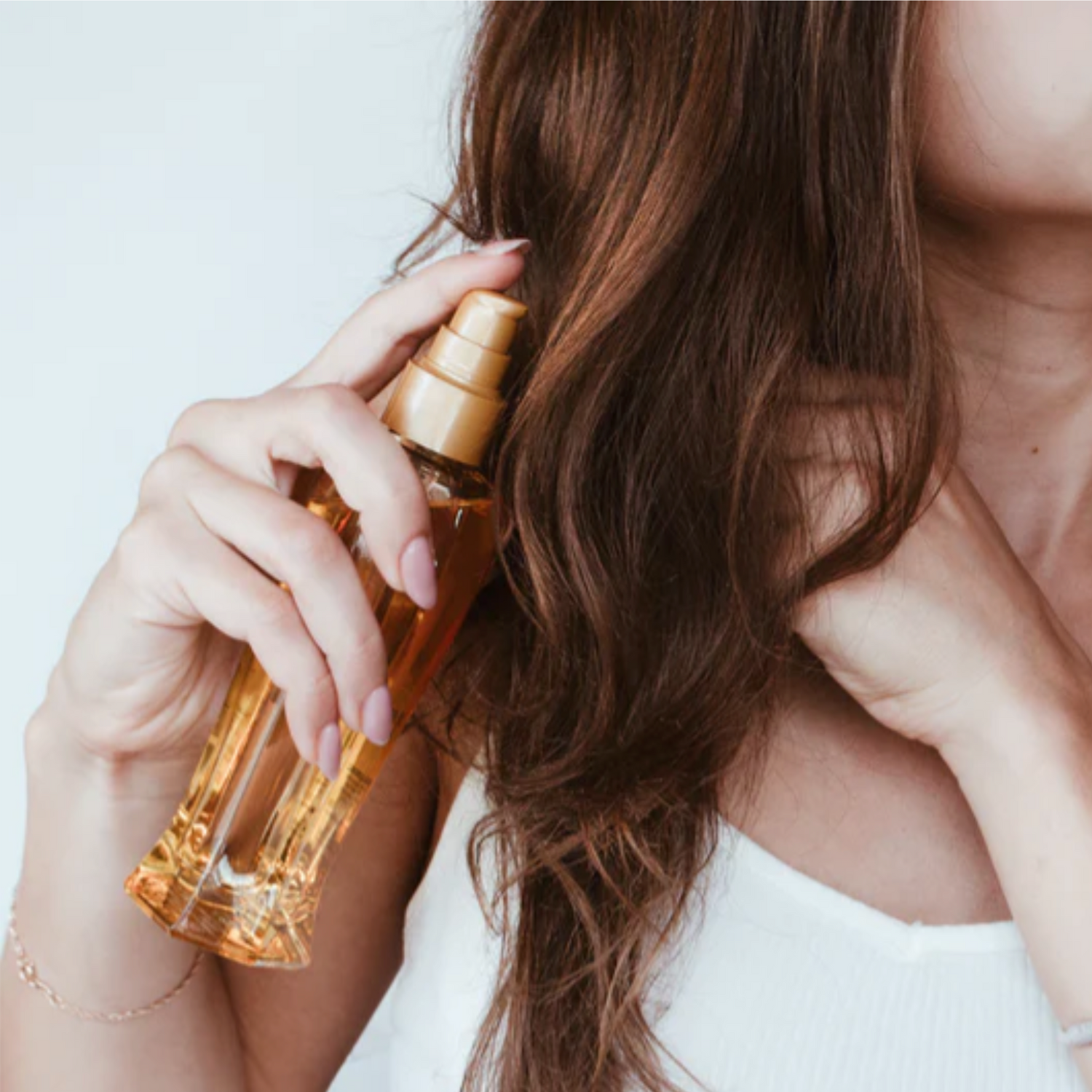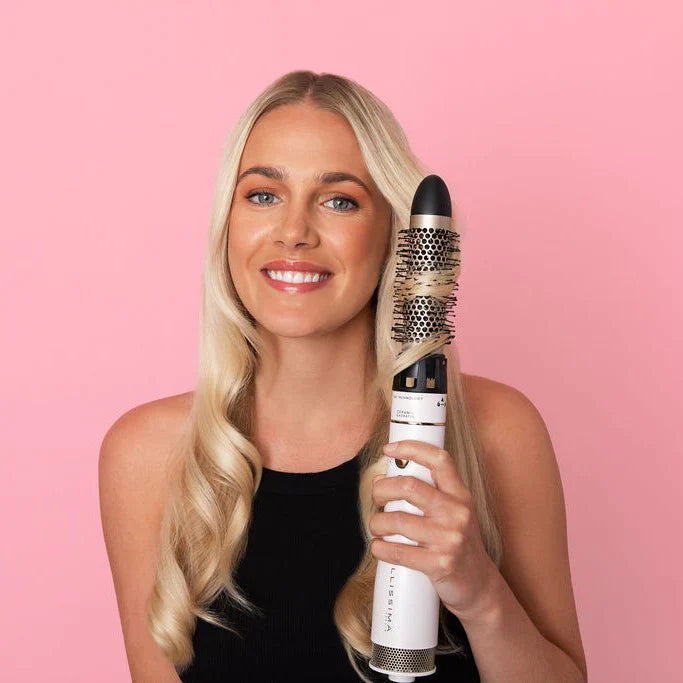In the world of hair care, new trends constantly emerge, each promising to enhance the health and appearance of our locks. One such trend that has caught the attention of beauty enthusiasts is "hair slugging." But what exactly is it and why is it gaining popularity?
Hair slugging, much like its skincare counterpart, involves applying oil to the hair and letting it soak in for a period, usually overnight. This process is believed to moisturise the hair, leaving it smoother, shinier, and overall healthier.
Fans of hair slugging praise its ability to lock in moisture, prevent dryness and breakage, and shield the hair from environmental damage. It's particularly recommended for those with dry or damaged hair, as well as anyone looking to boost hydration and shine.
But does hair slugging truly deliver on its promises? In this guide, we'll explore the ins and outs of hair slugging, including how effective it is and how to slug your hair. If you're curious about the buzz surrounding hair slugging and whether it's right for you, keep reading to find out more.

What Is Hair Slugging?
Hair slugging is similar to skin slugging, it involves coating your hair in oil and letting it soak in overnight (or for several hours) before rinsing it out. A lot of people wrap up their hair in a scarf or sock while it’s soaking to promote better absorption of the oil. The goal is to hydrate hair and leave it softer, shinier and healthier.
By applying a thick layer of a moisturising product to the hair and scalp, proponents of hair slugging believe that it helps to seal in moisture, prevent dryness and breakage, and leave the hair feeling nourished and rejuvenated. The occlusive nature of the product forms a barrier that can help protect the hair from environmental damage and reduce frizz.
Hair slugging is often recommended for those with dry or damaged hair, as well as for individuals looking to add extra hydration and shine to their locks. However, it's essential to consider individual hair types and preferences when trying out this technique, as some people may find that heavy products weigh down their hair or cause buildup over time.
Does Hair Slugging Work?
The effectiveness of hair slugging can vary depending on individual hair types, preferences, and the specific products used. Advocates of hair slugging argue that it can be beneficial for adding moisture, softness, and shine to the hair, as well as reducing frizz and preventing breakage.
The principle behind hair slugging is that by coating the hair with a heavy, occlusive product and allowing it to sit for an extended period, moisture is locked in, and the hair is protected from environmental damage. This can be particularly beneficial for individuals with dry or damaged hair, as well as those looking to add extra hydration to their locks.
However, it's essential to approach hair slugging with caution and consider potential drawbacks. Some people may find that heavy products weigh down their hair, leading to a greasy or limp appearance. Additionally, certain ingredients, such as petroleum jelly, may not be suitable for all hair types and could potentially cause irritation or clog pores on the scalp.
Ultimately, whether or not hair slugging works for you may require some experimentation and trial and error. It's essential to consider your hair's specific needs and preferences, as well as to patch-test new products to ensure they are suitable for your scalp and hair type. Consulting with a hairstylist or dermatologist can also provide valuable insights and recommendations tailored to your individual hair care routine.
How To Slug Your Hair?
Before we discuss how to slug your hair, let’s first look at what tools you’ll need.
Hair Slugging Tools
- Product: Choose a suitable occlusive product for hair slugging. This could include oils (such as coconut oil, argan oil, or jojoba oil), hair butters (shea butter, cocoa butter), or petroleum jelly (such as Vaseline). Consider your hair type, preferences, and any potential sensitivities when selecting the product.
- Wide-tooth comb or fingers: Use a wide-tooth comb or your fingers to evenly distribute the slugging product throughout your hair. This helps ensure that the product is applied thoroughly from roots to ends.
- Hair clips or silk scrunchies: Divide your hair into sections using hair clips or ties to facilitate even application of the slugging product. This helps ensure that all areas of your hair receive adequate hydration and moisture.
Optional tools:
- Satin or silk pillowcase: Consider using a satin or silk pillowcase to protect your hair and prevent transfer of the slugging product onto your pillow. Satin and silk pillowcases are gentler on the hair and help reduce friction, minimising the risk of damage or breakage.
- Shower cap or towel: If you prefer to leave the slugging product on your hair overnight, you may choose to cover your hair with a shower cap or wrap it in a towel to prevent the product from transferring onto your pillow and bedding.
Hair Slugging: Step By Step Guide
Follow our step by step guide on how to slug your hair:
- Choose the right product: Select a product with occlusive properties that will create a barrier to lock in moisture. This could include oils, butters, or even petroleum jelly. Consider your hair type and preferences when choosing the product.
- Prepare your hair: Start with clean, damp hair. You can wash your hair with a mild shampoo and conditioner before slugging. Pat your hair dry with a towel until it's damp but not dripping.
- Section your hair: Divide your hair into sections to ensure even application of the slugging product. Use hair clips or ties to keep the sections separate.
- Apply the product: Take a small amount of the chosen product and apply it evenly to each section of your hair, starting from the roots to the tips. Use your fingers or a wide-tooth comb to distribute the product thoroughly.
- Focus on the ends of your hair: Pay extra attention to the ends of your hair, as they are more prone to dryness and damage. Ensure that the product is evenly distributed to provide maximum hydration.
- Massage the scalp: If you're using a product that is suitable for the scalp, gently massage it into your scalp to nourish and moisturise. Be mindful not to use too much product on the scalp, especially if it's prone to oiliness.
- Allow the product to sit: Once you've applied the product, leave it on your hair for an extended period. Many people choose to do hair slugging overnight, but you can adjust the timing based on your preference.
- Protect your pillow: To avoid transferring product onto your pillowcase, consider using a satin or silk pillowcase, which is gentler on the hair and helps prevent friction.
- Rinse or wash: In the morning or after the desired duration, rinse or wash your hair to remove the product. You may need to shampoo your hair twice to ensure all residues are eliminated.
- Assess results: Assess how your hair feels and looks after slugging. Some individuals experience softer, more hydrated hair, while others may find the process too heavy for their hair type.
Remember, the effectiveness of hair slugging can vary from person to person, so it's essential to tailor the method to your hair's specific needs and preferences. Experiment with different products and durations to find what works best for you. If you have any concerns or specific hair care needs, consulting with a hairstylist or dermatologist can provide personalised guidance.
How often should I slug my hair?
The frequency of hair slugging can vary depending on individual hair type, condition, and personal preferences. Some people may benefit from slugging their hair more frequently, while others may find that less frequent application is sufficient. Here are some factors to consider when determining how often to slug your hair:
- Hair Type: Individuals with dry or damaged hair may benefit from more frequent slugging to help restore moisture and improve hair health. On the other hand, those with oily hair may find that less frequent slugging is necessary to avoid weighing down the hair or causing buildup.
- Hair Condition: Consider the current condition of your hair when determining how often to slug. If your hair is feeling particularly dry, brittle, or lacking shine, more frequent slugging may be beneficial to provide hydration and nourishment. Conversely, if your hair is already well-moisturised and healthy, less frequent slugging may suffice.
- Personal Preference: Ultimately, the frequency of hair slugging is a personal choice based on individual preferences and lifestyle. Some people may enjoy the ritual of slugging their hair regularly, while others may prefer to do it on an occasional basis or as needed.
- Product Used: The type of product you use for hair slugging can also influence how often you choose to slug your hair. Lighter oils or leave-in conditioners may be suitable for more frequent use, while heavier products like butters or petroleum jelly may be reserved for less frequent application.
As a general guideline, you may consider starting with once or twice a week and adjusting based on how your hair responds. Pay attention to how your hair feels and looks after slugging, and tailor the frequency to meet your hair care needs. If you have any concerns or questions about how often to slug your hair, consulting with a hairstylist or dermatologist can provide personalised recommendations.
How Else Can I Care For My Hair?
In addition to slugging your hair, there are many other ways you can care for your hair as part of your styling routine. Whether you have curly hair or straight hair, at Bellissima Italia we offer a range of hair styling tools that prioritise hair care and health.
Explore our range of salon quality hair styling tools including Diffon Diffusers, Straighteners, Hot Brushes, Hair Dryers and Stylers.


